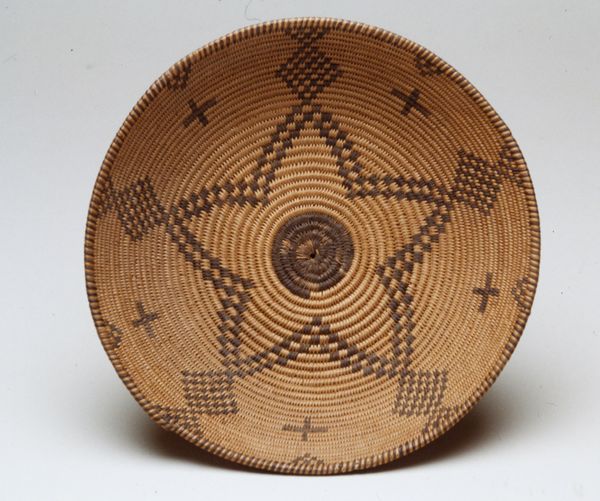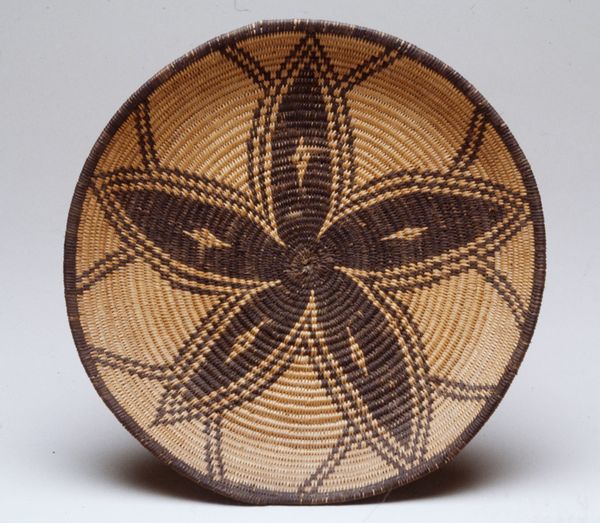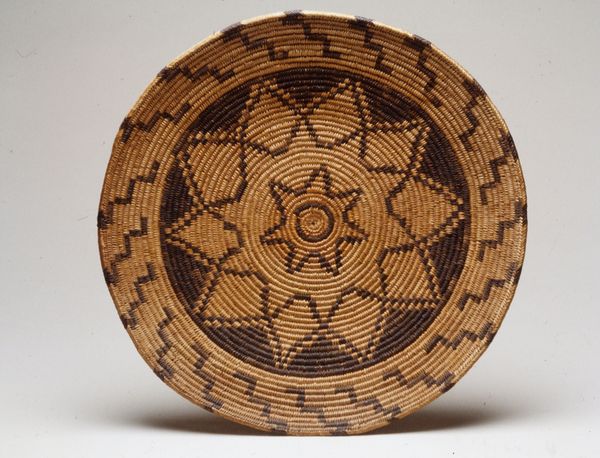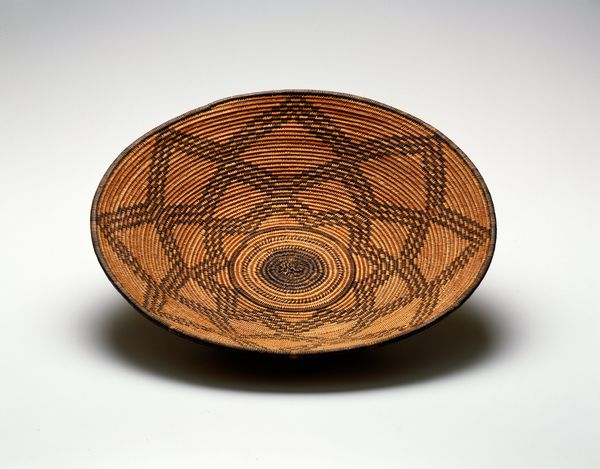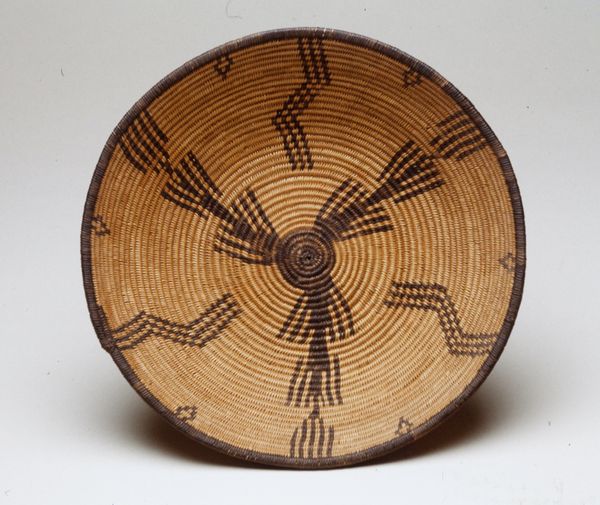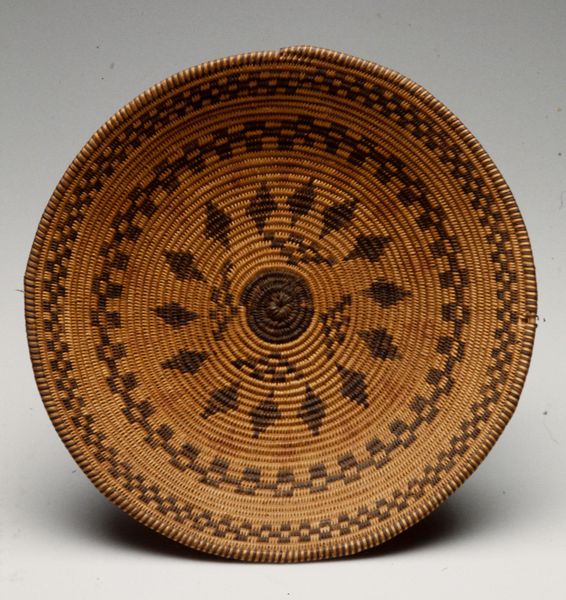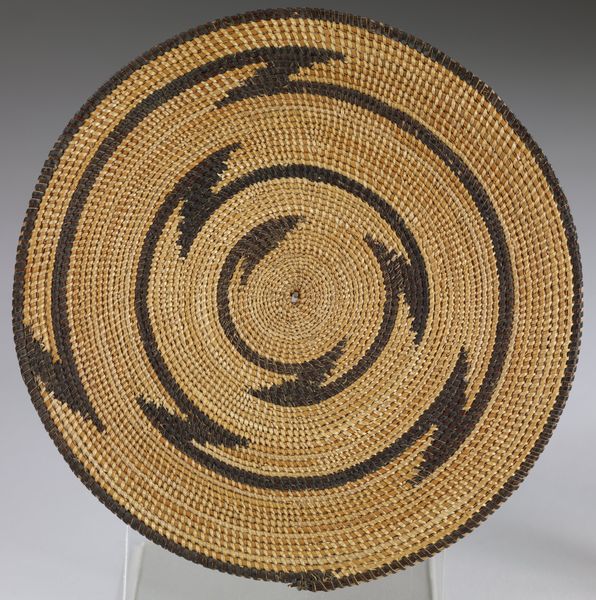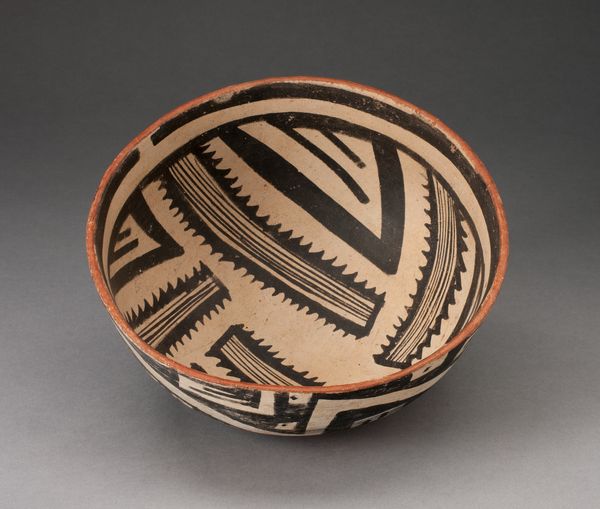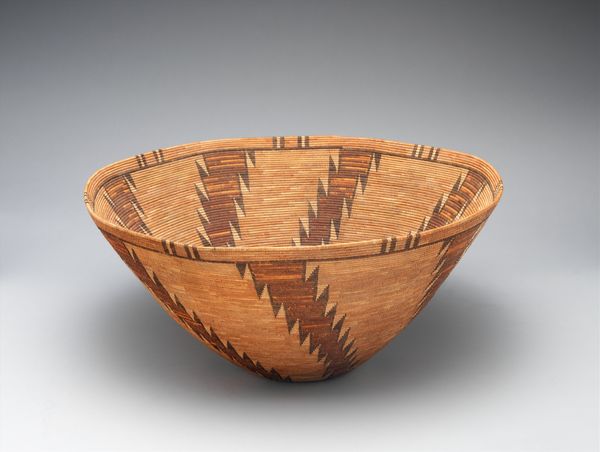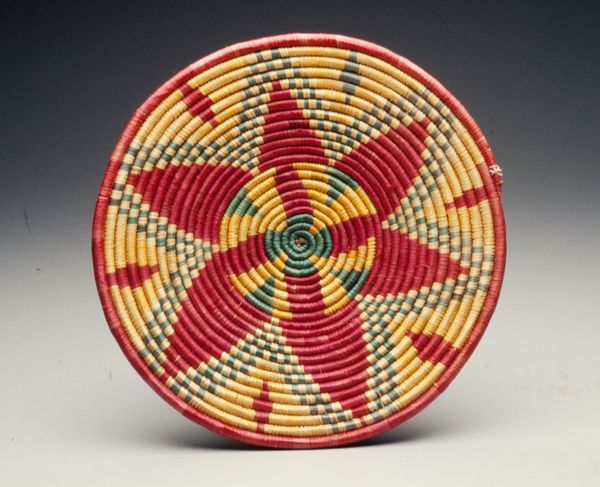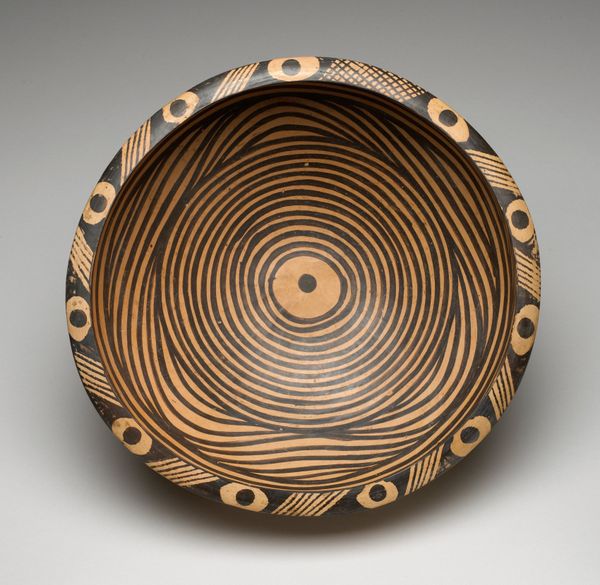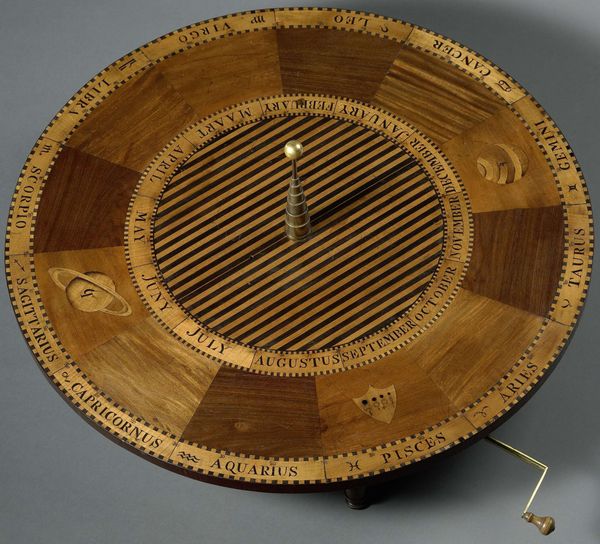
fibre-art, weaving
#
fibre-art
#
weaving
#
geometric
#
decorative-art
#
indigenous-americas
Dimensions: 1 3/16 x 12 13/16 in. (3.02 x 32.54 cm)
Copyright: Public Domain
Curator: The geometric pattern radiating from the center gives this basket a subtle optical effect. Editor: It feels grounded, doesn’t it? Like staring into the rings of a very old, wise tree. I sense history in each carefully woven layer. Curator: You're right. This piece, entitled "Basket," was created around 1950 by Hopituh Shinumu, a Hopi artist. It’s currently held at the Minneapolis Institute of Art, and is considered an example of fibre art that employs a weaving technique. Editor: Fibre art...which feels like an inadequate term for something that has to have taken so many hours, maybe days or weeks, to complete. It's meticulous! What kind of fibre did she use, I wonder, and where did it come from? What else was going on when she was working on it? Curator: I understand what you mean about "fibre art" sounding insufficient! It is so rich with labor and tradition. We know Hopi basketry often involves materials sourced directly from the environment – yucca, sumac, various grasses. And traditionally, basket making is tied to the cycles of the agricultural year, mirroring the earth’s rhythm in its making. Editor: Right, consumption and utility versus… high art. Though this geometric design feels anything but accidental or practical; its appeal crosses any assumed barrier between fine art and craftwork. Did this artist specifically seek gallery representation? Or was it simply a useful household container destined to accidentally become a collectible work with time? Curator: Knowing what we do about Indigenous practices, there's a spiritual dimension that surpasses mere utility. So, while it would have had a functional purpose within its community, it carries ancestral knowledge through its symbolism. Think of the geometric designs and concentric circles as a meditation, each loop holding intent. It becomes much more than what we consider decor, then. Editor: The material processes and choices—fibre type, pigment origin, and construction method—are each linked to resource availability and land knowledge. It reminds me to be aware of that history. The basket seems less and less accidental, more intentional, more sacred even... Curator: Precisely, like a song sung into physical form. A labor of love, indeed. Editor: I now see that, beyond the basket’s physical utility and geometric attractiveness, it functions almost as a symbol—representative of how objects themselves store a wealth of significance well beyond that for which they are created.
Comments
minneapolisinstituteofart almost 2 years ago
⋮
Flat wicker baskets are unique to the Third Mesa Hopi. Notable for their fine weave and bright colors, these baskets have both utilitarian and ceremonial uses. They are created by women, and are given as a gift from the bride to the groom at their marriage, or carried in the women's Basket Dance. Complicated designs are usually woven into each basket, either a figure or geometric pattern like in these examples.
Join the conversation
Join millions of artists and users on Artera today and experience the ultimate creative platform.
